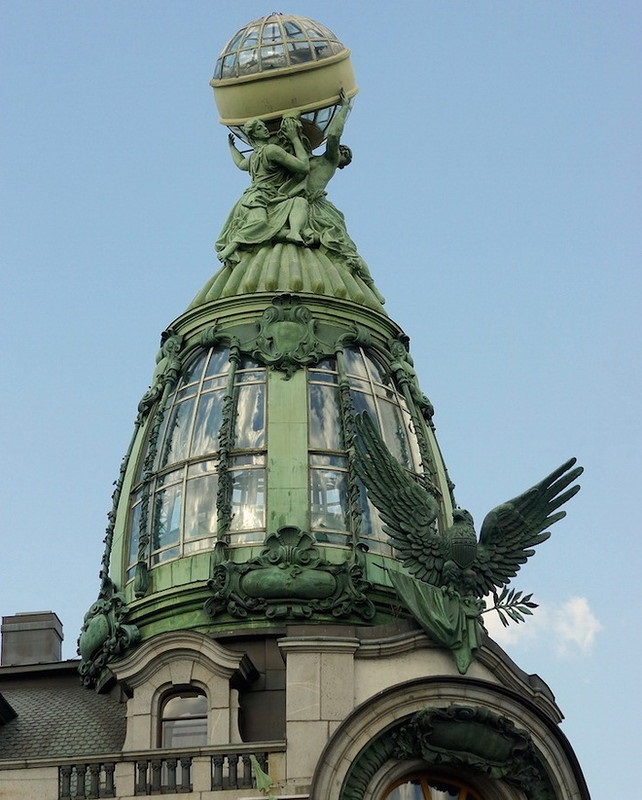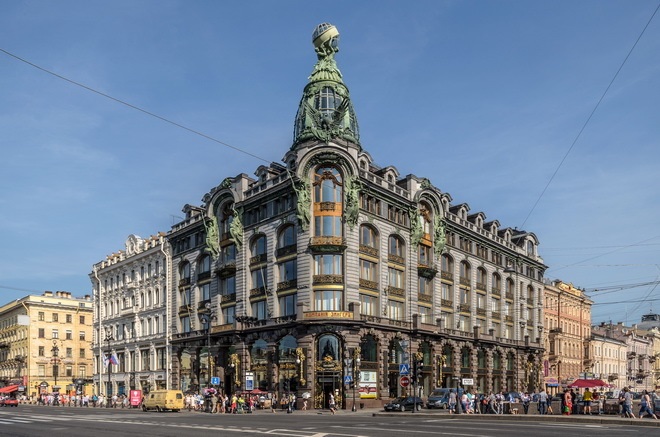The building was designed by architect Pavel Suzor for the Russian branch of the Singer Sewing Machine Company. The management of the Singer Company initially intended to construct a skyscraper, similar to the Singer Building, the company headquarters being built at that time in New York, but the Saint Petersburg building code did not allow structures taller than the Winter Palace, residence of the emperor. The architect found an elegant solution to the 23.5 meter height limit: the six-story Art Nouveau building is crowned with a glass tower, which in turn is topped by a glass globe sculpture created by Estonian artist Amandus Adamson.[1] This tower creates the impression of a substantial elevation, but is subtle enough not to overshadow either the Kazan Cathedral or the Church of the Savior on Spilled Blood.
During the First World War the US Embassy was located in the building for a brief period.[2] In 1919, not long after the October Revolution, the building was given to the Petrograd State Publishing House. It quickly became the city's largest bookstore, and was subsequently named "The House of Books" in 1938. The bookstore remained functioning during the Siege of Leningrad until November 1942, reopening again in 1948. The building closed for reconstruction from 2004-2006, reopening as the home of several businesses, including the familiar House of Books. [3] and Café Singer.[4]
Singer House












